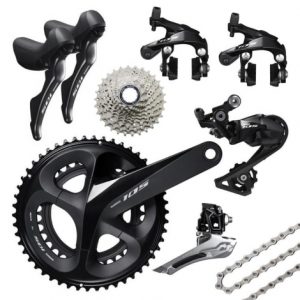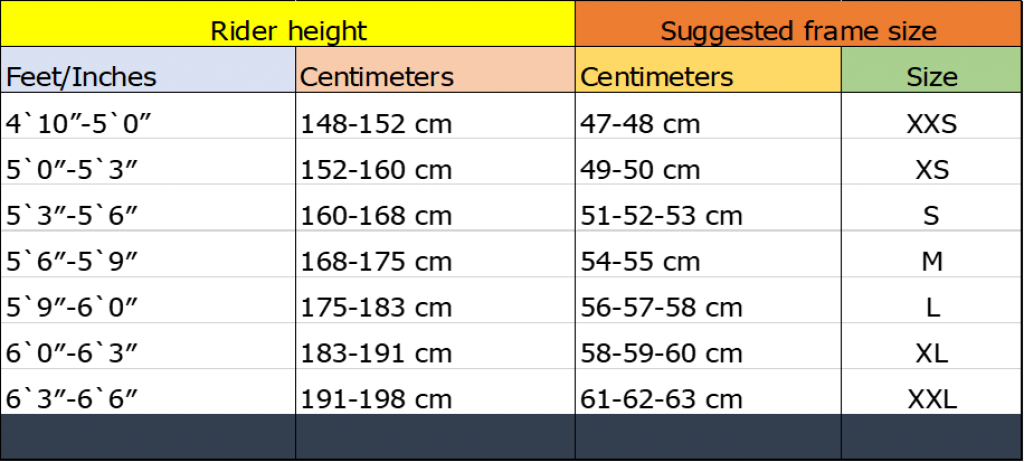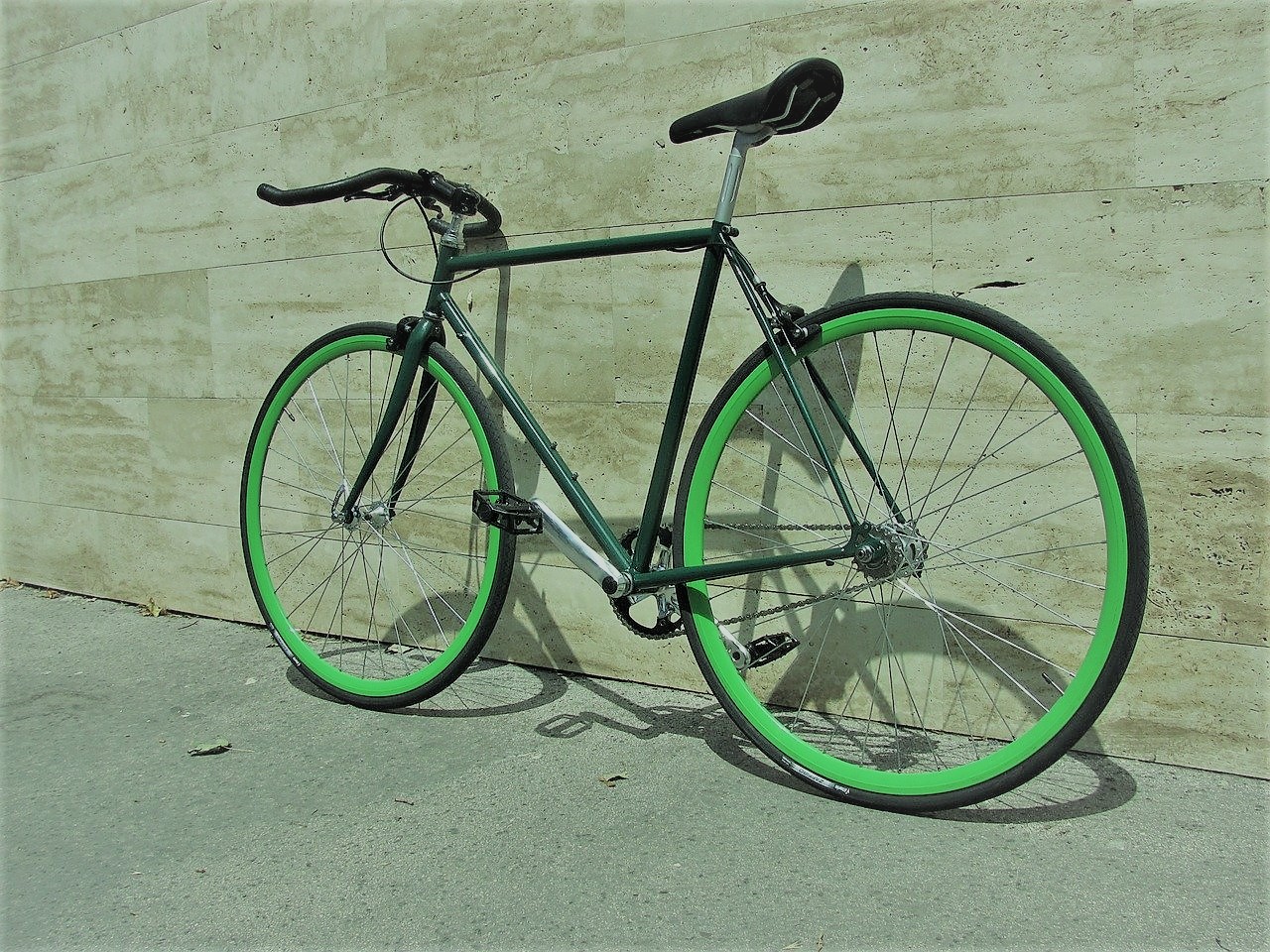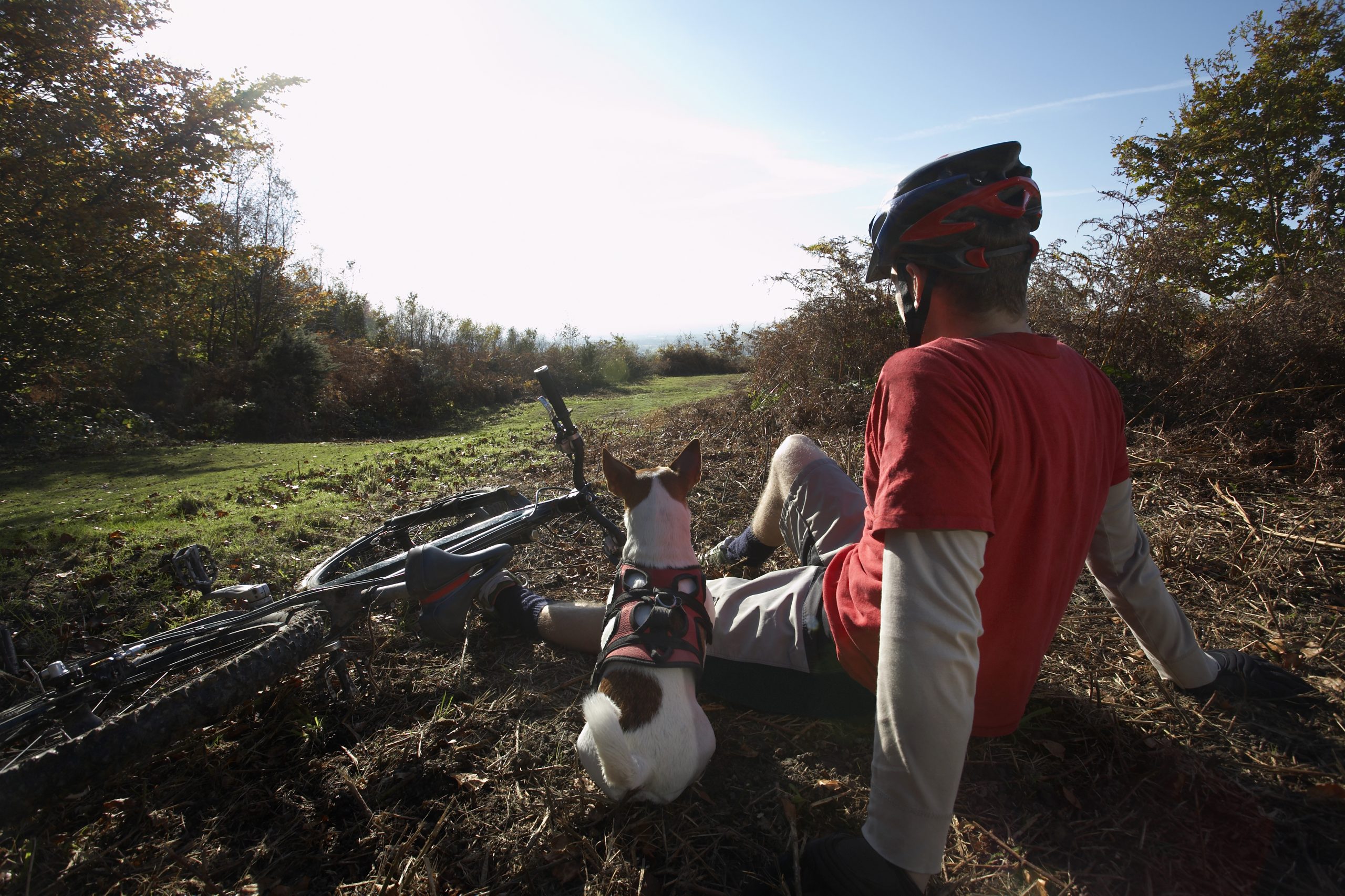A Complete Buyer’s Guide for Beginner Road Bikes
January 8, 2024
271 Views
0
SaveSavedRemoved 0

Table of Contents
If you are a novice rider looking for a road bike for beginners, you may feel overwhelmed by the many categories of bicycle types, materials, and components available on the market. That is why we’ve put together this complete buyer’s guide for beginner road bikes to help you find the best entry-level road bike.
Road cycling is an excellent choice for outdoor recreation. Riding a bike is not only great for socializing with friends, but it is also an excellent way to build strength and endurance through pedaling. Additionally, cycling provides a relaxing way to enjoy scenic views and experience the outdoors in a way that is impossible with other modes of transportation.
Road bikes have a rich history that dates to the early 1800s when people first started experimenting with the design of the bicycle. Initially, road bikes were referred to as “safety bicycles” because of their improved stability and ease of use compared to earlier models. Over time, road bikes have evolved to become more aerodynamic and lightweight, making them the go-to choice for serious cyclists.
Your budget will also play a crucial role in determining the type of road bike you should consider. If you are on a tight budget, you might want to consider an entry-level road bike that provides excellent value for money. For those just starting in the world of cycling, a starter road bike is an excellent option to try. Our buying guide for beginner road bikes will take you through the process step by step to help you find the road bike that is right for you.
>>Click here for strength training techniques for cyclists
>>Click here for our best starter road bikes
If you are buying your road bike online, make sure to clarify your stand-over height to match the number of your inseam. Your stand-over height is usually about 1-2” lower than your inseam. You can find the bike sizing chart easily online.
 As a veteran cyclist of over 20 years, I can attest that choosing the right frame material for your road bike is crucial for your overall riding experience. There are four main types of frame materials available on the market: aluminum, titanium, carbon fiber, and steel. Each material has unique properties and characteristics that make it suitable for different riding styles and budgets.
To determine the right bike frame for you, ask yourself the following questions:
As a veteran cyclist of over 20 years, I can attest that choosing the right frame material for your road bike is crucial for your overall riding experience. There are four main types of frame materials available on the market: aluminum, titanium, carbon fiber, and steel. Each material has unique properties and characteristics that make it suitable for different riding styles and budgets.
To determine the right bike frame for you, ask yourself the following questions:
 A bike groupset is a collection of mechanical or electric components that work together. The groupset typically consists of gear shifters, a brake system, front and rear derailleurs, a cluster of sprockets or cassettes, a crankset, a chainring, and a bottom bracket. If you’re in the market for a new road bike, the groupset is one of the most important components to consider after the bike frame. In this buyer’s guide, we will cover starter groupsets for beginners.
A bike groupset is a collection of mechanical or electric components that work together. The groupset typically consists of gear shifters, a brake system, front and rear derailleurs, a cluster of sprockets or cassettes, a crankset, a chainring, and a bottom bracket. If you’re in the market for a new road bike, the groupset is one of the most important components to consider after the bike frame. In this buyer’s guide, we will cover starter groupsets for beginners.
Type of Road Bike in the Market
When it comes to choosing a road bike, you have a variety of options to consider. Different types of road bikes have unique features that make them suitable for specific riding styles and purposes. In this article, we will take a closer look at the most common types of road bikes.Road Racing Bikes:
Road racing bikes, as the name suggests, are built for speed and agility. These bikes are designed with aerodynamics in mind, with a focus on reducing wind resistance to maximize speed. They have a more aggressive geometry, with a lower torso position that allows riders to generate more power through the pedals. Road racing bikes have thinner tires than other types of road bikes, which reduces rolling resistance and makes them more efficient on smooth roads. They also tend to be lighter in weight, which further enhances their speed and maneuverability.Endurance Road Bikes:
Endurance road bikes are designed for long-distance riding and comfort. They have a more relaxed geometry than road racing bikes, which puts the rider in a more upright position. This helps reduce strain on the back and neck during long rides. Endurance road bikes typically have wider tires than road racing bikes, which provides more stability and comfort on rough roads. They also tend to have a more forgiving frame, which absorbs vibrations and bumps in the road.Gravel Bikes:
Gravel bikes are a newer type of road bike that is designed for off-road riding. They have wider tires than other types of road bikes, which provides more traction on loose and uneven terrain. Gravel bikes also tend to have a more relaxed geometry, which makes them more comfortable for longer rides. Gravel bikes often have disc brakes, which provide better-stopping power and control in wet or muddy conditions. They also have a more durable frame and components, which can withstand the wear and tear of off-road riding.Single-Speed Bikes:
Single-speed bikes, also known as “fixies,” are a popular option for cyclists who prefer simplicity and ease of use. As the name suggests, these bikes only have one gear, which means you don’t have to worry about shifting gears or maintaining a complicated drivetrain. Single-speed bikes are also typically lighter and more affordable than their geared counterparts, making them a great option for city commuters or casual riders. While they may not be suitable for hilly or challenging terrain, single-speed bikes are perfect for flat, smooth roads and can provide a fun and low-maintenance riding experience.Bike Fitting Guideline for Entry-Level Bikes
Bike fitting has come a long way in recent decades. In the past, cyclists would often perform self-fitting, and the process was quite simple. With the help of friends, they could do everything on their own. However, things have changed, and bike fitting has become more complex. Today, a professional bike fitting is highly recommended for anyone who takes cycling seriously, regardless of whether they are a professional racer or just starting. An appropriate bike fitting can help improve your riding posture, increase your endurance, and reduce the risk of injury.Road Bike Fitting for Beginner Road Bikes
If you are a beginner road bike rider looking to perform bike fitting for the first time, you need to assess your specific performance characteristics. It is crucial to tune up your bike to match your riding style. The first step in bike fitting is to determine the right frame size for your bike. Consult our frame size chart below to make sure you get the right fit. Remember that getting the right frame size is crucial for your aerodynamic posture and endurance during a long ride. Proper cleat fitting is also essential for optimal performance. Make sure to position the cleat beneath the soft upper of your shoes. Misplacement of cleats can cause foot pain, lower back pain, and even shoulder pain during the ride.Measuring Your Best Entry Road Bike Size
Bike sizing varies across manufacturers, so it is important to measure your bike size before purchasing a bike. The measurement is typically performed by gauging the distance from the center of the bottom bracket to the top tube. Our size chart below can help you determine the right bike size for you.Suggested Road Bike Size
Measuring Your Stand-over Height for Starter Road Bikes
If you have a traditional parallel top tube, make sure that you have at least 1” of clearance from the top tube when you are straddling the bike. For a sloping top tube, a clearance of 2” or more is expected. Also, please make sure that you are wearing shoes during the measurement. Additionally, your torso should be 90 degrees with your arm and 45 degrees with your hip. In conclusion, getting the right bike fit is crucial for your comfort and safety while cycling. By following these guidelines, you can ensure that you get the best performance out of your starter road bike.Beginner Road bike components
Regardless of the brand of bicycle, you plan to buy, ultimately, you must deal with its components. Even though there are some variations in bike components within each brand, all of them are the same. This buyer’s guide will gradually lead you to an individual component of the road bike for beginners and provide you with its characteristics and benefits. Road Bike frame As a veteran cyclist of over 20 years, I can attest that choosing the right frame material for your road bike is crucial for your overall riding experience. There are four main types of frame materials available on the market: aluminum, titanium, carbon fiber, and steel. Each material has unique properties and characteristics that make it suitable for different riding styles and budgets.
To determine the right bike frame for you, ask yourself the following questions:
As a veteran cyclist of over 20 years, I can attest that choosing the right frame material for your road bike is crucial for your overall riding experience. There are four main types of frame materials available on the market: aluminum, titanium, carbon fiber, and steel. Each material has unique properties and characteristics that make it suitable for different riding styles and budgets.
To determine the right bike frame for you, ask yourself the following questions:
- What is your budget?
- Do you prioritize a lighter bike?
- How long do you plan to ride your road bike?
- Do you prefer to buy from a local bike shop or an online marketplace?
Road Bike Gear Mechanism Explained
Gear is a crucial component of a road bike that makes it easier for cyclists to pedal faster or climb hills with less effort. So how does it work? Basically, the gear mechanism converts your pedaling force into the spinning energy of the wheels. There are three common types of gear mechanisms used on road bicycles: external drivetrains, hub gears, and gearboxes. In this article, we will only cover external drivetrains, which are usually found on entry-level road bikes.The Road Bike External Drivetrains Explained
Most road bikes, especially those for beginners, come equipped with external drivetrains as their standard gear mechanism. The external drivetrain set consists of the shifter, cassette, chainring, and derailleur. The shifters, which are usually integrated into the brake hoods, control the derailleur, causing the chain to shift to a larger or smaller sprocket. A typical road bike has 9 to 12 sprockets, which can be adjusted from 8-speed to 12-speed. Meanwhile, the chainrings are attached to the cranks, and the chain shifted is snapped by the front derailleur. Most road bikes have a double chainring setup that works in combination with the sprocket cluster to provide precise gear changes. The standard outer chainring size for road bikes is 53t (53 teeth), while the smaller one is 39t (39 teeth).What is a bike groupset?
 A bike groupset is a collection of mechanical or electric components that work together. The groupset typically consists of gear shifters, a brake system, front and rear derailleurs, a cluster of sprockets or cassettes, a crankset, a chainring, and a bottom bracket. If you’re in the market for a new road bike, the groupset is one of the most important components to consider after the bike frame. In this buyer’s guide, we will cover starter groupsets for beginners.
A bike groupset is a collection of mechanical or electric components that work together. The groupset typically consists of gear shifters, a brake system, front and rear derailleurs, a cluster of sprockets or cassettes, a crankset, a chainring, and a bottom bracket. If you’re in the market for a new road bike, the groupset is one of the most important components to consider after the bike frame. In this buyer’s guide, we will cover starter groupsets for beginners.
Brake System on Starting Road Bike
A proper brake system is essential for safety on the road when riding a bike. There are three types of “RIM” brakes: caliper, cantilever, and V-brake. Caliper brakes are common on entry-level road bikes and require minimal maintenance. Cantilever brakes are found on cyclocross and mountain bikes and offer more stopping power than caliper brakes. V-brakes, originally for mountain bikes, are now used on some road bikes and provide strong stopping power. Disc brakes, mounted to the wheel hub and frame/fork, are the most powerful brake system and offer cable-pulled or hydraulic options. Disc brakes are common on high-end road bikes.Wheels and Tires
Road bikes are typically equipped with 700C wheel rims and narrow surface tires. Of all the components, road bike rims and tires are the only parts of your bike that have direct contact with the road surface. The standard 700C wheels let you cruise the road with impressive speed and allow you to climb up a stiff hill with less effort. Although carbon-fiber wheels and aero wheels are excellent choices as they will help you cut through the air better, they are too expensive to buy. Ultimately, your riding style will determine what type of bike wheels you should buy. If you are an everyday cyclist who prefers riding to commuting, lightweight wheel rims are your perfect choice. In contrast, aerodynamic wheels are for riders who aim to be as fast as possible. Generally, bike tires can be classified into three different categories: clincher, tubular, and tubeless. The most common type of tire on road bikes is a clincher tire. Most budget road bikes for beginners feature clincher tires as their standard tires. By the way, you may replace the original tires with tubular tires that offer enhanced rolling resistance and are lightweight. Tubeless tires seem out of the question because they are not in an affordable price range.Handlebars
Three key touchpoints connect you to your bike, and the handlebars are one of them. People often overlook the essentials of handlebars while focusing more on the pedal and saddle. Please note that mass-produced road bikes usually come with an average shoulder width, which may not entirely fit you. Wider handlebars may subsequently damage your neck and arms, while narrow handlebars will subdue the aerodynamic effect. It may be a good idea to ask your local bike shop to tweak the handlebars to fit your shoulder width. Additionally, most levers are adjustable, so do it to suit you best.Pedals
Bike pedals are one of three key touchpoints connecting you and your bike. Again, your riding style plays an integral part in the type of pedal you are going to use. There are two significant types of bike pedals: clipless pedals and flat pedals. Clipless pedals are the perfect choice for road bike riders who aim for more speed, control, and efficiency. As your shoe cleats completely lock into place, you will be able to achieve a maximum transfer of power to pedal strokes. On the other hand, if you are more concerned about security and comfort, flat pedals are your pedal option, as they allow you to put your foot down to the ground at any time. Flat or platform pedals are also standard for commuter bikes dealing with massive traffic in an urban area.Saddle
New cyclists often have an issue with uncomfortable bike saddles, which leads to injuries such as back pain. Therefore, getting the right saddle will help you enjoy a long bike trip without unbearable discomfort. For road cycling, a saddle should be long and narrow with minimum padding to facilitate the transfer of power while pedaling. In this case, the performance saddle is preferred over the cushioning seat.Road Bike Accessories
As a beginner cyclist, it is important to have the right accessories to ensure a safe and enjoyable ride. Here are some essential accessories that we recommend: Helmets: A high-quality helmet is a must-have accessory for any cyclist, regardless of experience level. It will protect your head in case of a fall or collision, and could even save your life. Lights: Cycling lights are necessary for both daytime and nighttime riding. During the day, they can help make you more visible to motorists, while at night, they will illuminate the road ahead and ensure that others can see you. Locks: When you are out on a ride, you’ll need a lock to secure your bike when you stop. A sturdy lock will help deter thieves and protect your investment. Hydration systems: Proper hydration is essential for any physical activity, including cycling. A hydration pack or bottle cage will allow you to carry water or other fluids with you on your ride. Cycling gloves: Gloves can provide extra grip on the handlebars and cushioning to reduce hand fatigue. They can also protect your hands in the event of a fall. Cycling shoes: Cycling shoes are designed with stiff soles to provide better power transfer and efficiency when pedaling. They also often have a secure closure system to keep your feet in place. Saddlebags: Saddlebags can be attached to the underside of your bike’s saddle and provide extra storage for essentials like spare tubes, tire levers, and a multi-tool. Cycling computer: A cycling computer can track your speed, distance, and other metrics to help you monitor your progress and performance. By investing in these essential accessories, you will be able to enhance your riding experience and stay safe on the road. So do not forget to grab these items before your next ride!Road Bike Maintenance
To keep it running smoothly and ensure a longer lifespan, it’s important to take care of it regularly. Here are some tips for maintaining and caring for your road bike: Cleaning: Give your bike a thorough cleaning after every ride to remove dirt and debris. Use gentle soap and water, and avoid high-pressure water streams. Clean the chain with a degreaser and lubricate it afterward. Lubrication: Keep your bike chain lubricated to ensure smooth shifting and reduce wear and tear. Use a quality chain lube and apply it regularly. Tune-ups: Get your bike regularly serviced by a professional mechanic, especially if you ride frequently. Tune-ups can include adjusting brakes and gears, checking for wear and tear on parts, and ensuring everything is properly tightened. Storage: Store your bike indoors in a dry, cool place. Avoid exposing it to extreme temperatures or direct sunlight for long periods of time. By following these simple tips, you’ll be able to keep your road bike in top shape and enjoy many great rides to come.Road Bike Riding Tips
Riding a road bike is a great way to stay active and explore the outdoors. Here are some tips to help you get the most out of your rides:- Always wear a helmet and other safety gear.
- Adjust your bike to fit your body.
- Follow the rules of the road and ride defensively.
- Be aware of your surroundings and anticipate obstacles.
- Stay hydrated and nourished during long rides.
- Keep your bike maintained and regularly check for issues.
- Explore new routes and have fun on your rides
- And more!!!







